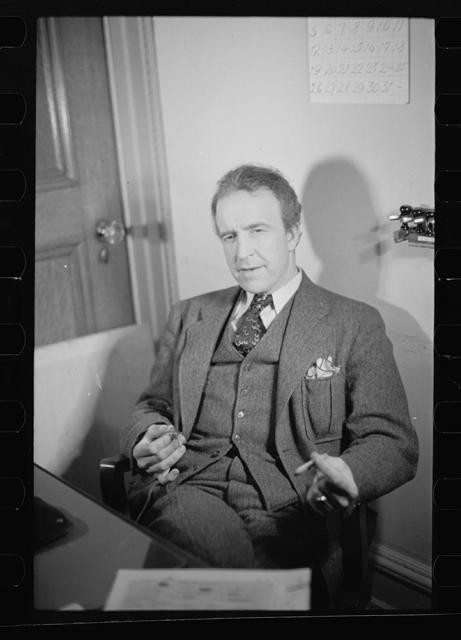In a mere five years, from 1925-30, architect Douglas Ellington transformed the landscape of downtown Asheville, designing such distinctive structures as Asheville City Hall, Asheville High School, the S&W Cafeteria and First Baptist Church.
Now, more than 80 years later, his architectural legacy continues at another Asheville landmark, the Asheville History Center at the Smith-McDowell House, with the opening of the exhibit Douglas Ellington: Asheville Boomtown Architect, on Sunday, Sept. 22.
The exhibit, which will run through mid-March, is the first to fill the museum’s temporary ground-level exhibit hall.
“The new gallery was designed to attract more locals to the museum, who might have already seen what the site has to offer,” says museum director Sharon White Gruber.
The first part of the exhibit highlights Asheville’s pre-Depression building boom, a period when more than 40 downtown buildings were erected, nearly all of which were influenced by the popular Art Deco style of the 1920s, says John Turk, exhibit curator and vice president of the board of trustees of the Western North Carolina Historical Association.
While Ellington was undoubtedly influenced by the rich colors, geometric patterns and lavish ornamentation characteristic of Art Deco, he also synthesized a variety of architectural trends to create “a style that was distinctly Ellington,” Turk explains. He says Ellington’s designs combined a type of European Neoclassicism called the Beaux-Arts with Italian Renaissance, and even a few notes of Christian symbolism.
Ellington also had a hand in the construction of the buildings he designed.
“Few architects get down with the workmen, but Douglas was very hands-on,” Turk says.
Perhaps the one Asheville architectural feat, of which Ellington was most proud, Turk says, is Asheville City Hall downtown, with its pink Georgian marble arranged in a characteristically Christian, octagonal shape with a Native American feather motif on top. Ellington had originally been appointed to design a complementary county building, but was denied the commission due to a disagreement between municipal and county officials.
Yet, despite his architectural accomplishments, Ellington came from rather humble beginnings.
Growing up in the sleepy Piedmont town of Clayton, N.C., at the turn of the century, 12-year-old Ellington and his two brothers were sent to live with their half-sister after their mother died of tuberculosis, says Sallie Middleton Parker, Ellington’s grand niece, who lives in Asheville.
Ellington eventually left North Carolina to attend college in Pennsylvania. While at the University of Pennsylvania, he was given the opportunity to study at the École des Beaux-Arts in Paris, where he became the first and only American to win the Prix de Rougevin, the school’s top architectural honor. Ellington fit in seamlessly with the intellectual circles, Parker says. He often engaged in political discussions with his elder brother while smoking cigars and listening to classical music.
It was Ellington’s brother, an astute businessman, Parker says, who sought out architectural work for Ellington, sending him first to Asheville and later to Maryland and Charleston.
Yet, despite Ellington’s seemingly sophisticated lifestyle, Parker’s childhood memories of her great uncle render quite a different man. Parker recalls Ellington with his long hair piled atop his head, tied with a string and stuffed under a hat, often sitting at the table, legs crossed at the knees, with cigarette stains streaked across the front of his pants.
“We would go to restaurants and he would pull out his soft lead pencil and doodle on whatever was available,” Parker says. “It meant so much to me, having him draw those pictures for me when I was a little girl.”
Many of the artifacts in the exhibit were donated from Parker’s personal collection of her great uncle’s artwork, including a chess set with pawns he carved from dog bones and a triptych painting of the mountains.
When not designing noteworthy Asheville buildings, Ellington was hard at work, building a summer home on Chunns Cove Road in Asheville for Kenneth and his wife, Margaret.
“He didn’t use any blueprints,” says Parker, who has owned the house since 2010. “He built the house according to what materials were left over [from his other building projects]. All of it was built by hand. Apprentices and other architects pitched in to help because they wanted to for fun.”
Ellington, who died in 1960, is buried in the family plot behind the house at Chunns Cove.



Before you comment
The comments section is here to provide a platform for civil dialogue on the issues we face together as a local community. Xpress is committed to offering this platform for all voices, but when the tone of the discussion gets nasty or strays off topic, we believe many people choose not to participate. Xpress editors are determined to moderate comments to ensure a constructive interchange is maintained. All comments judged not to be in keeping with the spirit of civil discourse will be removed and repeat violators will be banned. See here for our terms of service. Thank you for being part of this effort to promote respectful discussion.